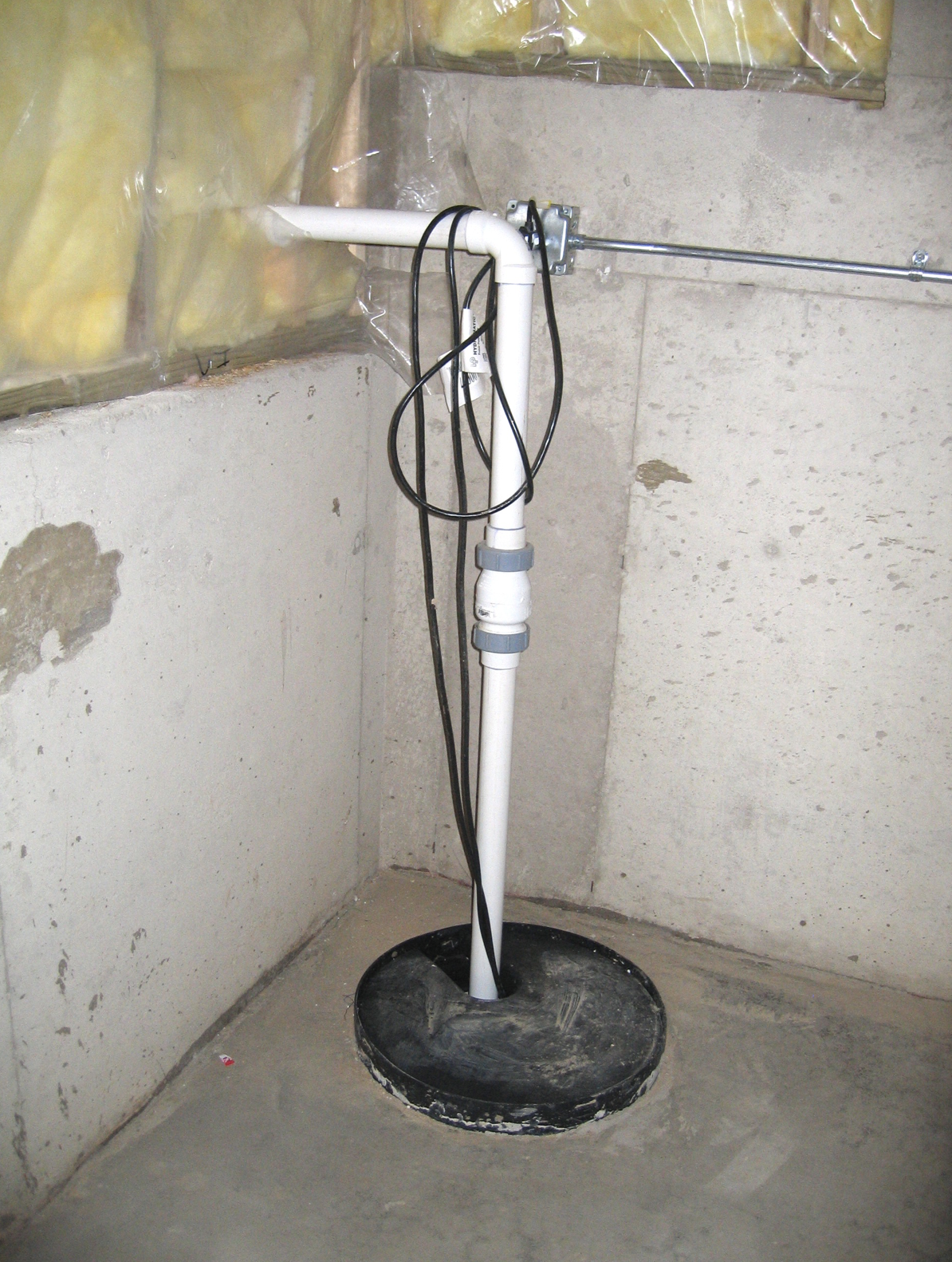Inspecting Sump Pump Covers
by Nick Gromicko, CMI®, Katie McBride and Kate Tarasenko

Sump Pump Basics
Water management strategies that help remove excess water from the foundation often include the installation of a reservoir, called a sump, in the basement or crawlspace of the home. The sump is generally a small pit (also called a crock or vault) that extends through the slab and into the ground below to provide a drainage place for excess water. Accumulated water can cause interior damage and encourage the growth of mold, mildew and fungus. Pumps should be maintained and equipped with all their necessary components in order to ensure their reliability.
New Construction
When building a home, the best way to protect the foundation from moisture issues is with proper site grading, the installation of gutters and downspouts, and the installation of an exterior footing drainpipe that drains to daylight, a dry well or a storm sewer. Home inspectors must check for these components—as well as their functionality—to ensure that there is no excess water that could damage the foundation.
Remodeling
When renovating a house that has evidence of water issues, if it is not feasible to construct an exterior drainage system, a drainpipe can be installed along the interior footing that drains to a sump pump, which collects the water and sends it to the stormwater, sewer, dry well, or other approved location. Even if the home inspector observes no signs of water intrusion in retrofit or new construction, a sump pit is sometimes installed in the basement floor slab as a precaution. If there are future changes in groundwater levels, a pump can be installed in the sump pit.
Sealing the Sump Pit
The sump pit should be covered with a gas-tight lid. While sump pumps are very effective in removing water, if they are not covered and installed properly, they can create additional water management issues, as well as indoor air quality concerns for the house. Sumps usually have standing water. If the sump pit is open or has a loose-fitting lid, this water can evaporate into the air, raising the relative humidity inside the home, basement, and crawlspace. This can promote mold growth, which is a health concern, and can increase the moisture level of wood framing, inviting fungal decay and wood-eating pests.
Uncovered or improperly sealed sump pumps can also allow radon and other soil gases to enter the basement and crawlspace, and then mix with the air inside the home. Radon is a naturally occurring radioactive, carcinogenic gas found in varying levels in the soil and air. In high-radon areas, if soil gases are allowed to enter the home, radon can accumulate inside the home at potentially toxic levels.

Figure 1. An open sump pump can allow moisture, soil gases, and radon to enter the home. (Image courtesy of the DOE.)
Installing a Sump Pump Cover
The 2009, 2012 and 2015 IRC require that sump pumps have a gas-tight, removable cover. ENERGY STAR Certified Homes, Version 3.0, Revision 08, requires that the sump lid be mechanically attached and the sump be fitted with a full gasket seal.
Here are some installation requirements:
- The electric sump
pump should be installed according to the manufacturer's specifications, making sure the float is unobstructed. The pump should be installed after the home's electric meter has been
set. This will allow testing of the pump to ensure that it's operating properly
and discharging water as intended.
- The sump pump model should have a tight-fitting cover that seals the entire surface of the
crock or vault. Sump covers should be made of durable plastic or other rigid
material and designed for airtight sealing with a built-in gasket. The sump pump lid should have built-in air-sealing grommets around all
penetrations for electrical wiring, water ejection pipes, or radon vent pipes.
- The cover should be mechanically fastened in place with screws or other means that will maintain tight contact between the lid, the gasket, and the rim of the crock. Sump covers that permit observation of conditions in the sump pit are recommended. If the sump is installed in a concrete slab, there should be caulk around the outside edge of the vault where the vault meets the concrete (EPA 1994). If the sump is installed in a crawlspace with a dirt floor covered by a polyethylene vapor barrier, check that the polyethylene covers the ground around the sump pump and that it's taped to the rim of the vault.

Figure 2. This sump pump is properly sealed with a mechanically fastened and gasketed lid.
(Image courtesy of the DOE.)

Figure 3. A sump pump
is installed in the basement slab to pump away water that collects in the
foundation drainage system. The sump has a tight-fitting cover to keep soil
gases and water vapor from entering the basement. (Image courtesy of the DOE.)
Summary
A sump pump is used to remove excess water from a home. There are multiple types, but they all monitor the water level to ensure that the water doesn't exceed a pre-set level and cause moisture intrusion or property damage. While most sump pumps are effective in removing water, they should always be covered with a gas-tight lid to avoid moisture problems, as well as to prevent the seepage of radon into the home. Home inspectors should encourage their clients to follow a scheduled maintenance routine and get an Annual Home Maintenance Inspection to ensure that their sump pump is operating efficiently and according to its estimated service life.
This article was sourced primarily from the U.S. Department of Energy and InterNACHI®.
InterNACHI's Home Inspection Standards of Practice
Sump Pump Operation and Inspection Guide
Take InterNACHI's free, online Residential Plumbing Overview for Inspectors Course now.
Radon (consumer-targeted)
Take InterNACHI's free, online Advanced Radon Measurement Service Provider Course now.
InterNACHI's Service Life Expectancy Chart
Read more inspection articles like this.

